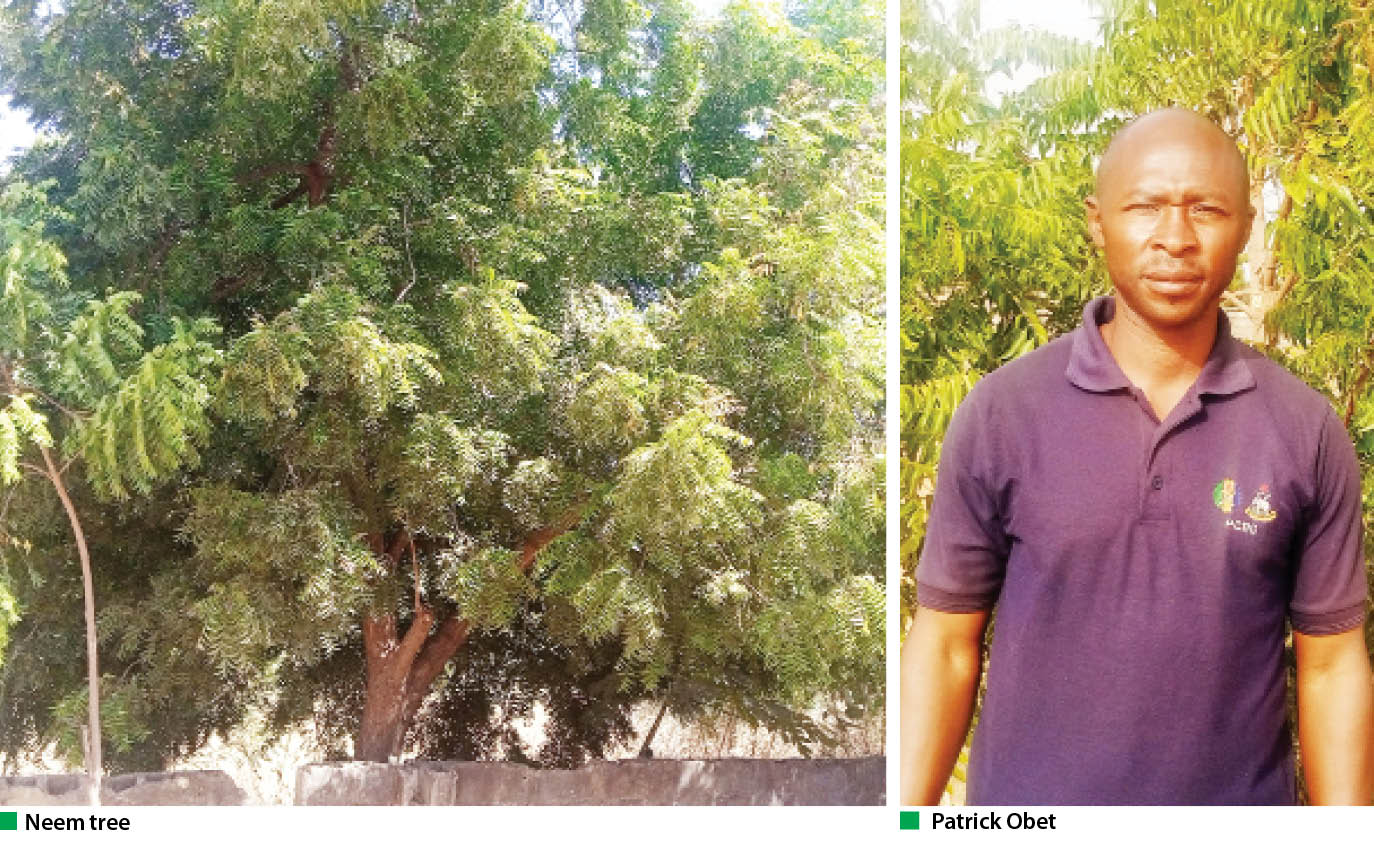How neem preserves grains, prevents diseases
Neem, which is popularly referred to as “dogon yaro” in Nigeria, especially in the Northern part of the country, is a tree that bears fruits and leaves with many economic, health and agricultural benefits. Neem is bitter in all its compartments: leaves, sprout, fruits/seeds, stem and roots. It is common in Nigeria but not quite […]

How neem preserves grains, prevents diseases
Neem, which is popularly referred to as “dogon yaro” in Nigeria, especially in the Northern part of the country, is a tree that bears fruits and leaves with many economic, health and agricultural benefits.
Neem is bitter in all its compartments: leaves, sprout, fruits/seeds, stem and roots.
It is common in Nigeria but not quite many know its extensive use, importance and application. The plant is also grown in other nations of the world and some journals succinctly capture its importance.
The editors of Encyclopaedia Britannica, in an article which was recently revised and updated by Melissa Petruzzello, said the neem plant which is also botanically called Azadirachta indica, is a fast-growing tree of the mahogany family valued as a medicinal plant, as a source of organic pesticides and for its timber.
- IPOB used false narratives to blame military for Amorka arson
- Despite being defrauded, I will return to Nigeria with my family – American
The plant, they say, has long been used in Ayurvedic and folk medicine, in cosmetics and in organic farming applications.
“Neem trees can reach 15 to 30 metres (49 to 98 feet) in height and have attractive rounded crowns and thick furrowed bark. The compound leaves have toothed leaflets and are typically evergreen but do drop during periods of extreme drought.
“The small fragrant white flowers are bisexual or staminate (male) and are borne in clusters in the axils of the leaves. The fruit is a smooth yellow-green drupe and has a sweet-flavoured pulp.
“Neem is usually grown from seed but can be propagated from cuttings or root suckers. The plant is hardy and resilient and grows well in poor, rocky soils. Neem tolerates a wide variety of environmental conditions but cannot survive freezing temperatures or being waterlogged.
“Nearly all parts of the neem tree are useful, and many of its medicinal and cosmetic uses are based on its antibacterial and antifungal properties. Neem is commonly used in shampoos for treating dandruff and in soaps or creams for skin conditions such as acne, psoriasis, and athlete’s foot.
“It is also a component in some toothpastes and mouthwashes, especially in the Indian subcontinent, and young twigs are used directly as crude toothbrushes in rural areas. The leaves have long been used as a traditional treatment for diabetes, and there is some clinical evidence suggesting that it may help control blood sugar levels.
“However, the oil and neem stem and leaves are unsafe for consumption by pregnant women and can cause miscarriage,” the article reads in part.
It further said that the oil extracted from the seeds could be used directly as insect and mite repellent and fungicide and was the source of many commercial pesticide products, including dusts, granules and concentrates.
Neem-based pesticides, it added, generally had low toxicity for mammals and were common in organic farming applications.
The plant is common, particularly in the Northern part of the country, but with little knowledge of its significance. Many people who happen to use it merely use it as chewing sticks to keep their teeth clean or the leaves to treat ailments such as malaria.
But there are vital agricultural benefits/uses of the plant which just a handful of people are aware of and equally apply.
In Plateau State for instance, the plant is common, especially in the Central and Southern zones in Langtang North, Langtang South, Qua’an Pan, Shendam, Kanke LGAs, among others.
Our correspondent gathered that the plant is used as a preservative for grains and as protection against crop diseases when planted.
A farmer in Langtang South, Patrick Obet, said neem has so much value for them which covers health, agriculture, building and environmental preservation, and that they use the tree as shade in their region which was hot and sunny.
He explained that the leaves are used to preserve grains like maize, millet and sorghum, adding that whenever the leaves were mixed with grains they prevented pests from attacking because of their bitterness.
Obet said the leaves also make the grains to stay healthy and remain in their much desired forms during storage, besides its ability to prevent the crops from diseases.
According to him, the trees are partly planted by people, but that they mostly grow through birds which feed on the seeds and excrete them at other locations.
Another farmer in Langtang North, Rose Danladi, agreed that neem leaves prevent grains from rotting and that oil could be extracted from the seed and used to treat ailments like fever, pointing out that sick children were often given half spoon to drink.
She said even adults could use the leaves to treat fever by boiling and drinking it before bathing with the rest.
On his part, a resident of Du District in Jos South, Victor James Davou, said his parents told them a lot about the agricultural and health value of the plant, and that they had been practicalising them and getting good results.
He said apart from using the leaves to preserve grains, the seeds could be grinded and mixed with grains before planting, noting that such prevented termites from eating up the planted grains.
Davou, therefore, urged every Nigerian to take advantage of the agricultural/farming, nutritional, health and building construction value of the neem plant, adding that the wood carved out of the plant was good for building houses because termites did not eat it.
